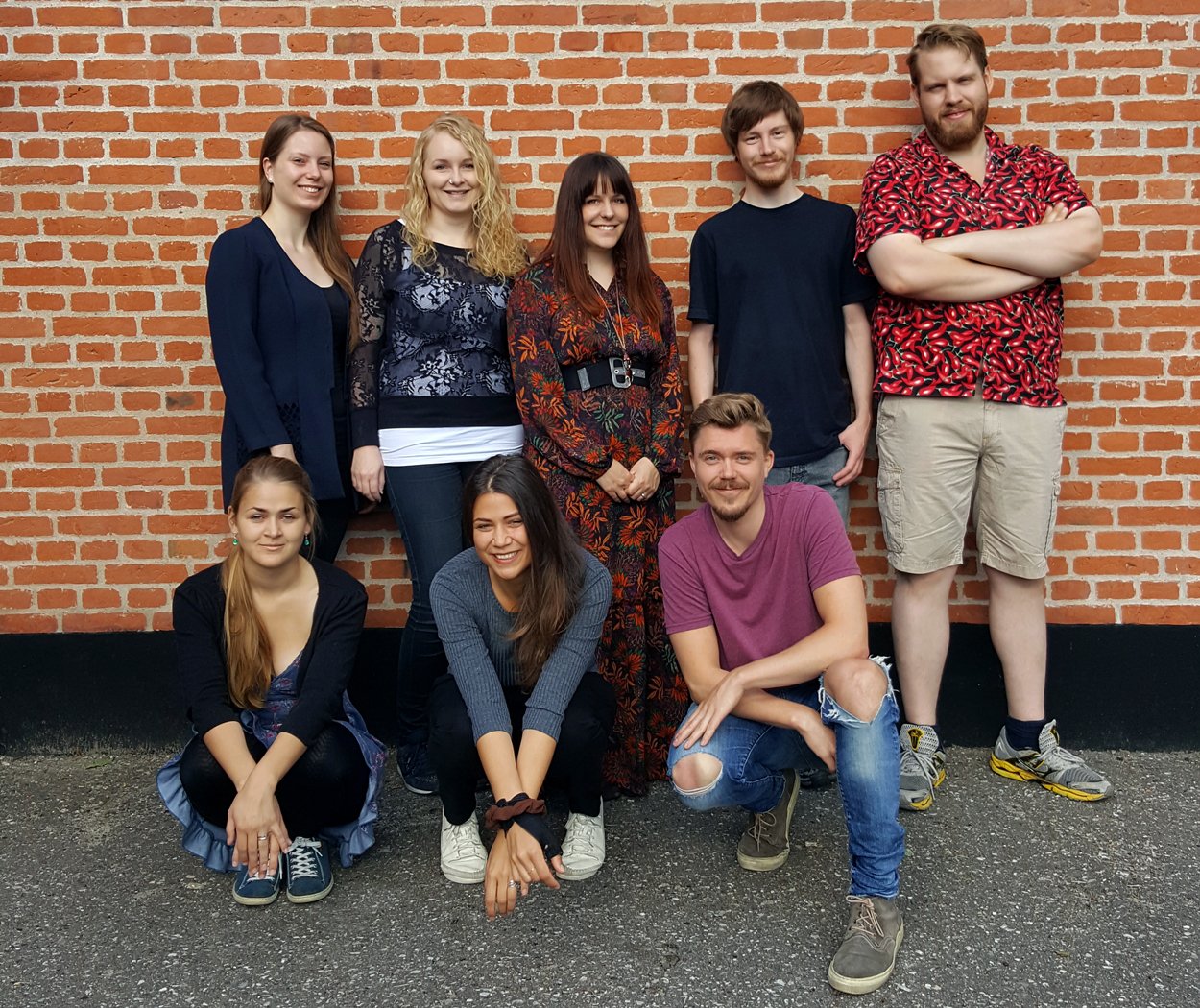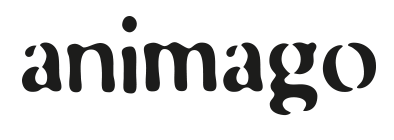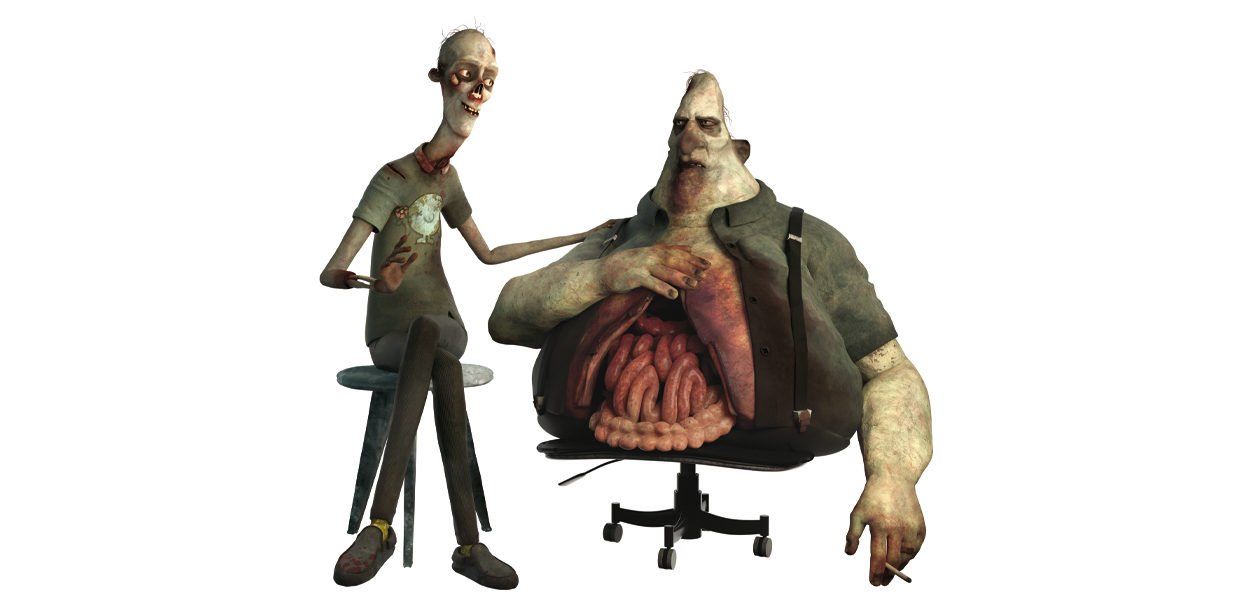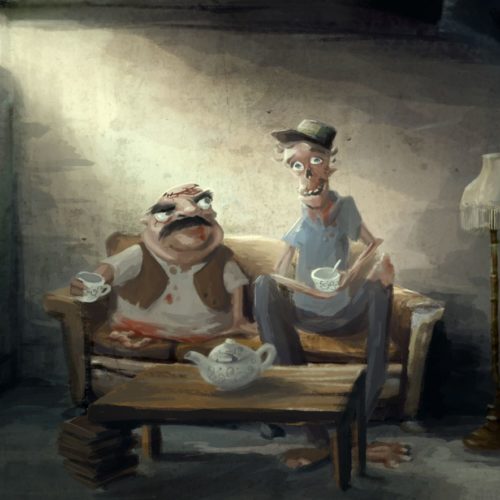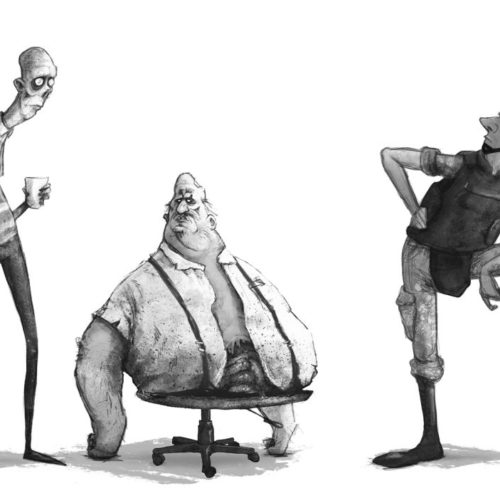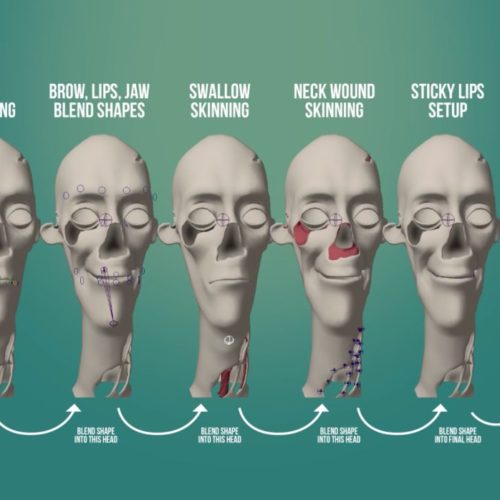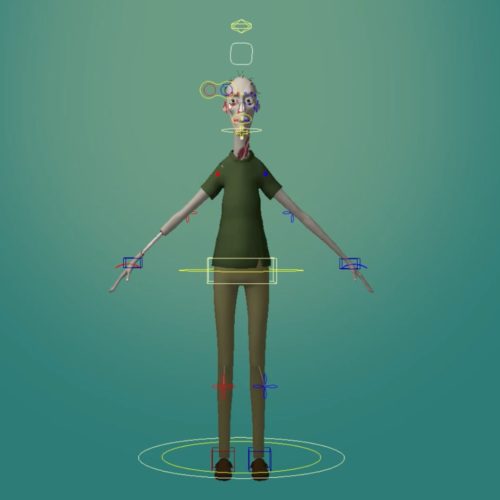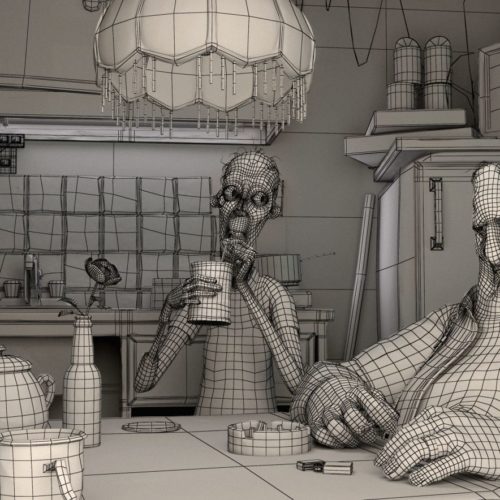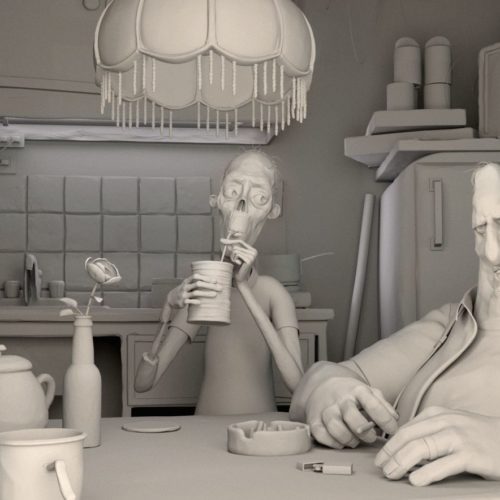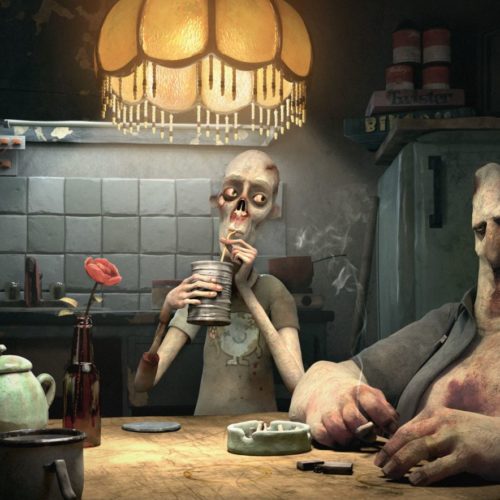Best Young Production: “Less Than Human”
Last year’s animago AWARD for Best Young Production went to “Less than Human”, a documentary style animated film created by students at the Danish school known as The Animation Workshop. The team also took home the €3,000 sponsored by Digital Production in the category every year!
After surviving a zombie plague, human society is pondering whether to re-integrate the undead, who are now living in exile camps. The press is doing some on-site research there when they come upon Andy, a zombie delighted to see actual living people again after such a long time. He invites the team of journalists into his flat for tea, which turns out great. The subsequent interview might have been quite nice, too, were it not for Andy’s dark and moody roommate, Don.
Finding an idea
The initial concept for the short film came during a train ride, as character animator Steffen Bang Lindholm was noting down ideas in his sketchbook. He came up with the image of a zombie character bathing in the sun, whereby his intestines spelled out the words “Everybody needs a vacation”. Steffen imagined how funny it would be to carry out an interview with this character. The concept became more tangible when the team watched the news and saw the wave of hostility meeting refugees as they arrived in Europe.
One particular source of inspiration was the humour and timing of Matthew Walker’s short film “John and Karen”. “Less Than Human” was created in a space of 9 months by 8 students under the guidance of professors Anja Perl and Leigh Russell and a number of other industry professionals.
Screenplay writing
One of the major challenges facing Steffen was the idea of taking on the roles of writer and director, seeing as he had no experience in those realms up to that point. Writing the dialogue was a hard nut to crack, and it took a long time to get something that felt right. English is not Steffen’s first language, which made it even more difficult to write something genuine and authentic.
Maya/Blender workflow
The students placed the focus on a Maya/Blender workflow at an early stage, mostly due to the fact that one of the team members had experience with the open-source software. Blender was used for the digital layout and the blocking of the models, while the animation was done with Maya.
They were able to organise the work process for the modelling using the two software packets, seeing as both systems can export and open .obj files. The only problem that emerged were flipped normals, which they eventually solved using a script. The team used the script to clean the geometry of every finished model, which allowed them to take care of the issue before loading the asset into the pipeline.
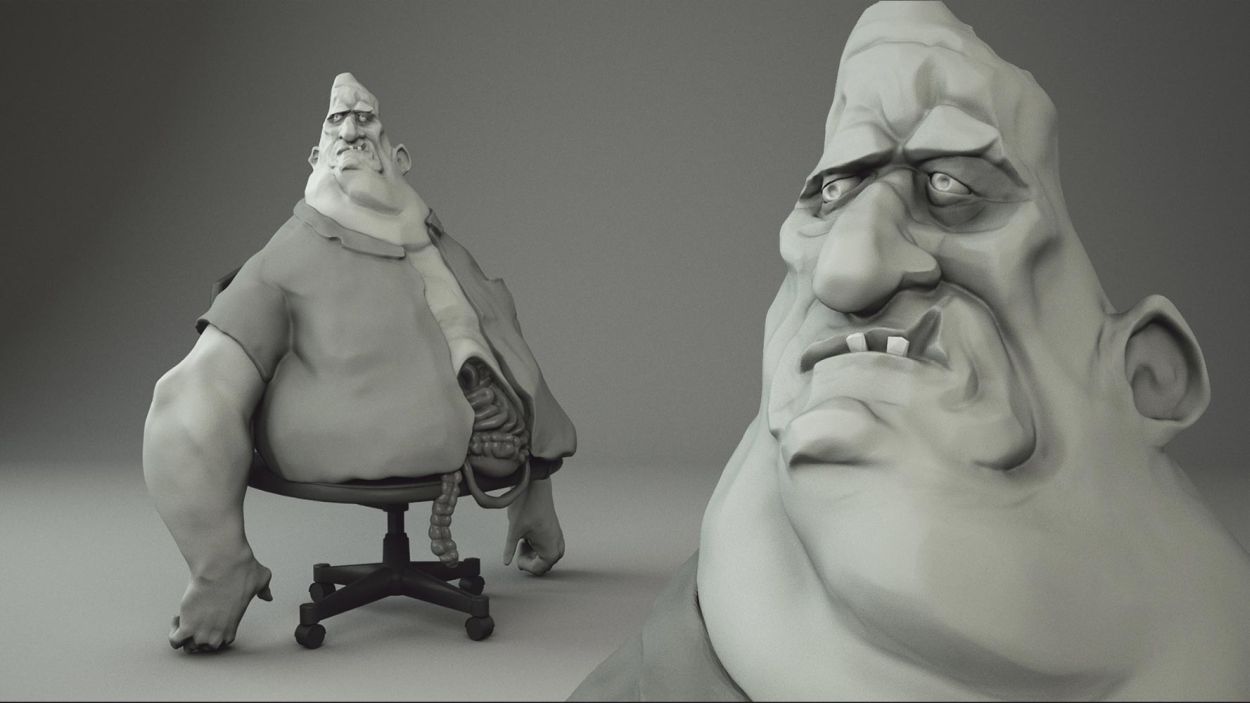
Shotgun for pre-production
The team used Shotgun to handle the project management, however mostly only in the pre-production phase. It helped the students maintain an overview of all assets and tasks involved in the entire production as well as the time required for each task. But the film was not a large-scale production, which meant that using the tool in the actual production would be too time-consuming in relation to its expected benefits. So they gradually tapered off their use of Shotgun. As Steffen noted, “Shotgun is a very good tool with many features, but it would have been overkill for our small production. It would be nice if there were a lighter version specially tailored to the work of small teams”.
Long shots & animation problems
The documentary style camera work meant that some of the shots were extremely long, which made it impossible for just one animator to handle them. The team thus divided the shots into two or more small Maya scenes and brought these back together again when the animation was almost finished. After that, the artists finalised the animation in the large single Maya scene, thus ensuring a seamless relation between the shots. The work of the animation artists was facilitated by a pose library; they were able to copy character poses and camera positions at the end of each shot to the beginning of the subsequent shot. This made it possible for each animator to continue working on their own shot without interruption. Only a small number of artists were responsible for further optimisations in the camera animation, which guaranteed continuity in the use of the camera.
The character rigs were complex and had an extensive facial control setup. Using AnimSchool Picker, the team set up selection sets for the controllers they used most frequently. The students did the same for the facial controllers and had a copy with a setup of the controllers in a window next to the character while completing the facial animation.
The constraints of the animation also presented the students with difficulties, because the constraint tool they had could not be used to export the animation. Their attempts to repair the constraint tool failed, which meant that the team had to fix the constraints manually in the long Maya scenes.
Geometry cache
The length of the shots also caused the team problems in the geometry cache of the animation for the rendering, because it was difficult for Maya to compute the high frame count (2,000 frames in some shots). The software crashed more often than the cache was successfully exported, which meant that the team had to split the shot once again so that a lower number of frames could be processed simultaneously. “In the future, we’ll certainly think twice about undertaking such long shots again”, laughs Steffen.
Houdini
The students used SideFX’s Houdini to implement the smoke simulations of Don’s cigarette. At first, they thought about using stock video material or live-action shots of smoke in post-production. But after some tests, they figured out that Houdini provided the best results, so they stuck with it.
The Renderman beast
The students decided to use Renderman, because it’s free for non-commercial projects and the team would not be limited to a certain number of licenses. The engine also has a de-noiser feature that allows grain to be removed from the output image; this meant that it could be rendered in a slightly lower quality which, of course, saved on rendering time. Plus the shaders were easy to learn and the preview render in Maya worked very quickly as compared to V-Ray. The students tried to finalise the scenes as best as they could in Maya, because the de-noiser feature only worked in the beauty render. “In V-Ray, we were used to being able to apportion the images for compositing in many different passes, which wasn’t possible with Renderman. But since the rendering was very fast, we simply changed things in Maya and rendered the scene anew. Towards the end, we used several masks in compositing”, notes Steffen.
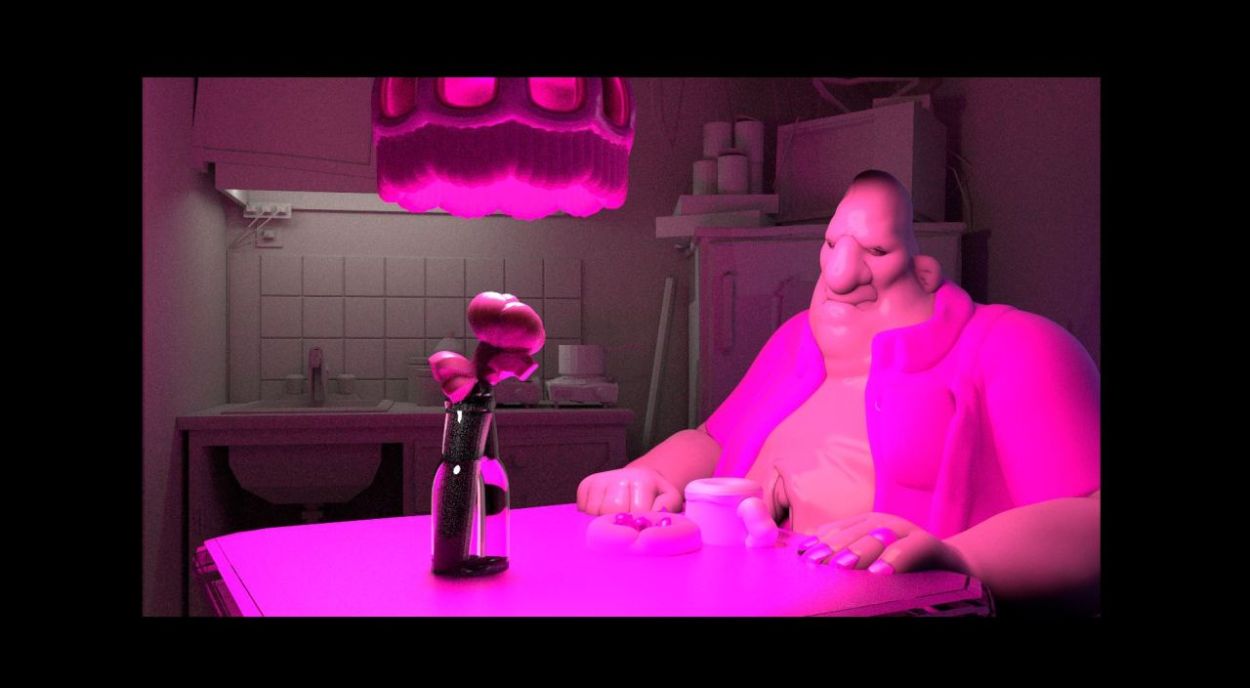
Since the team had never worked with Renderman before, they required a lot of trial and error before truly understanding the programme: “We had to learn how Renderman behaves ‘behind the scenes’. Our Maya scenes quickly became disorderly with the old shader networks and settings. We had to clean the scenes first and keep the files updated for the cached geometry so that we could bring the files through the render farm. Otherwise we ended up with errors in the output images and in the old geometry/animation”, Steffen recalls. To solve this problem, the students wrote scripts that automatically loaded the assets and settings into the render scenes as soon as one was opened, so that the old data disappeared.
Future plans
Steffen doesn’t yet know what’s in store for his two zombies. He’s received a number of interesting offers to continue the project, but the director has not yet decided whether he’s even interested in moving forward with the idea. One thing’s for sure; audiences definitely want to find out what happens to Andy and Don in the future!
(Mirja Fürst)
